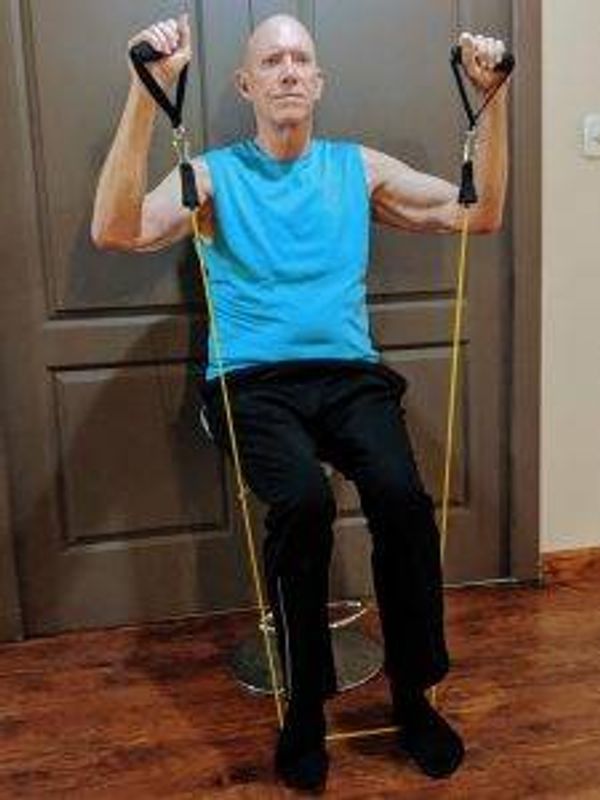A Simple, Effective Tool for Strengthening Muscles
Resistance bands are versatile, easy to pack and inexpensive
Ugh. It’s late. It’s raining. It’s … whatever reason you tell yourself you can’t exercise or go to the gym. Sound familiar?
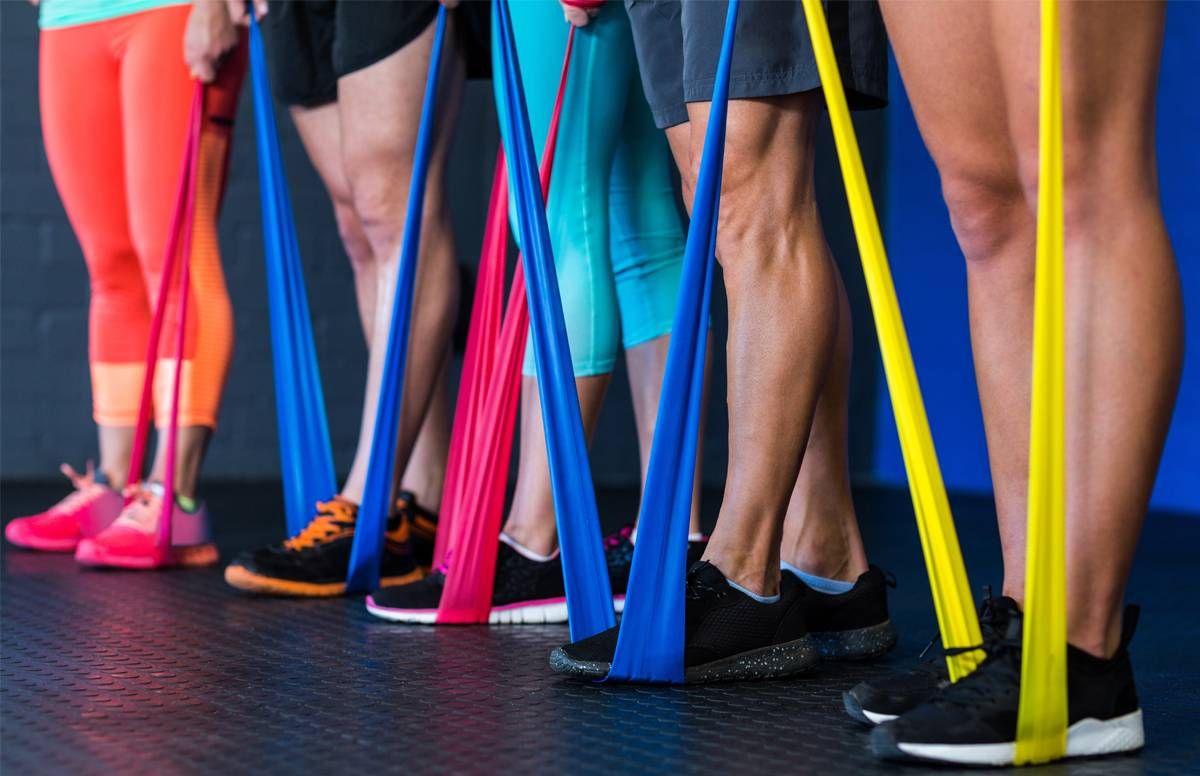
But as we get older, exercise becomes an even more critical component of healthy aging. Adults begin to lose as much as 3% to 5% of their muscle mass per decade after the age of 30. The corresponding drop in overall strength and mobility more than doubles your risk of fracturing a hip, collarbone, leg, arm or wrist.
“If we lose strength in our muscles we don’t move them as often, which may lead to further decreases in flexibility if they are not taken through their full range of motion to maintain their length,” says Victoria Bowen, physical therapist at Arthritis & Rheumatism Associates in Maryland.
Simple But Effective
One effective way to build and maintain muscle is by using resistance bands (also called exercise bands) for a strength-training workout. Resistance bands are stretchy latex, flat bands, mini-loops or tubes with handles.
"They may not look like much, but they offer a ton of benefits,” says Rozalynn S. Frazier, the senior fitness editor of Health magazine.
"They may not look like much, but they offer a ton of benefits."
Physical therapists have used resistance bands for years to increase patients’ strength and flexibility. Now they’re becoming more popular in the general population as a versatile workout apparatus you can use at home or anywhere.
Unlike free weights that offer continuous resistance throughout the entire range of motion, resistance bands create a greater challenge the more they are stretched. And while gravity only pulls on free weights in the vertical plane, exercise bands “encourage motion in three hundred and sixty degrees, making them invaluable in rehabilitation, as well as sports that require strength and flexibility in multiple planes, such as golf or tennis,” says Dr. Mary Badon, an orthopedic surgeon and owner of SOMA Movement Studio in Unionville, Conn.
The best way to stick with any fitness program is to enjoy it. “Using bands provides variety, so the person remains excited and energized about exercising,” says Robert Herbst, 62, a personal trainer and 19-time World Champion powerlifter from Larchmont, N.Y.
Extra Benefits of Resistance Bands
One good thing about resistance bands: no need to lace up the sneakers for a jog or drive to the gym. Resistance bands are right there in your home, ready for a workout when you are.
You don’t even have to set aside a chunk of time. Grab those bands and whip out a few exercises whenever you’re between other activities.
Since they’re extremely lightweight and compact, don’t forget to toss them in your suitcase when you travel.
Exercise bands are light on the wallet, too. You can buy them individually or in sets. A simple beginner’s set costs around $10. A full-blown set with different types of bands, handles, door anchors and ankle straps is less than $25. Sets include a range of bands — light, medium, heavy — to create different degrees of difficulty. Different strength levels typically have different colors. The bands are easy to find, in sporting goods stores and online.
Whatever your current fitness level, there’s a resistance band workout routine that will increase your strength and flexibility without overtaxing your joints. Before we highlight some basic exercises, here are a few tips to keep in mind:
- No matter how fit you think you are, go easy at first. Choose a comfortable level of resistance and get a feel for staying properly balanced. You’ll be using muscles differently than normal and there’s no benefit in getting overly sore.
- For any exercises where you’re bracing the bands with your feet, it’s best to wear flat bottom shoes or socks. Typical athletic shoes could damage the equipment.
- If you purchase resistance bands with door anchors so you can pull the band outward from the door, remember to always put the anchor portion on the hinge side of the door.
- You’ll be more comfortable doing floor exercises on a yoga or exercise mat.
- Follow all safety instructions provided with your resistance bands.
To Get You Started
The following exercise descriptions and photos will give you a taste of what resistance band workouts are like. These four exercises target different major muscle groups.
Experts say to aim for two to three sets of 12 to 15 repetitions to begin with. As you progress, increase the level of resistance so that eight reps are all you can comfortably complete with good form. For more exercises and information, the American Council of Exercise website has a number of photos and videos demonstrating how to do resistance band exercises.
Standing chest press: This exercise targets the chest muscles. Position a door anchor at chest height and grab each handle with your back to the door. Move forward to create resistance and position your hands in front of your chest. With elbows up and palms facing down, slowly press the handles straight out in front of you until your arms reach full extension. Hesitate, then return to the starting position.
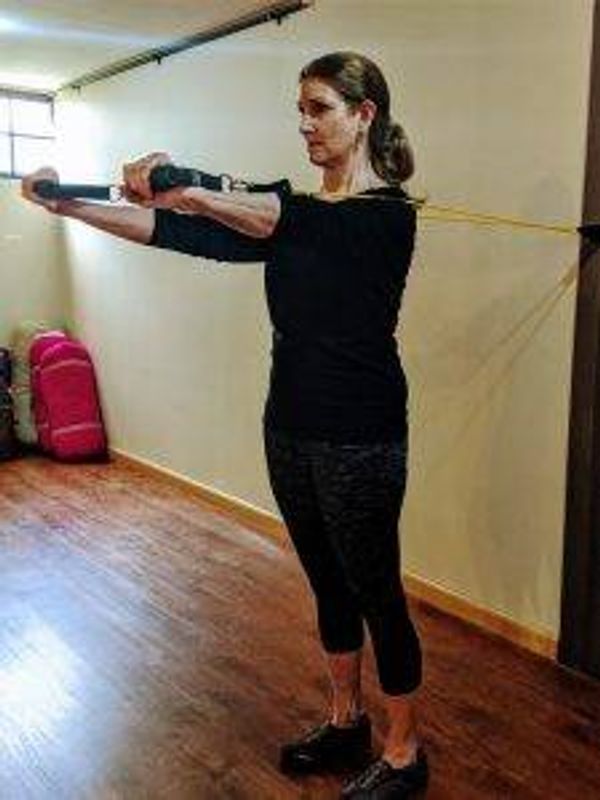
Standing row: This targets the back muscles. With the anchor in the same position as above, face the door and hold each handle. Step backward with your arms fully extended to create resistance. Slowly pull the handles into your chest, hesitate, then return to the starting position.
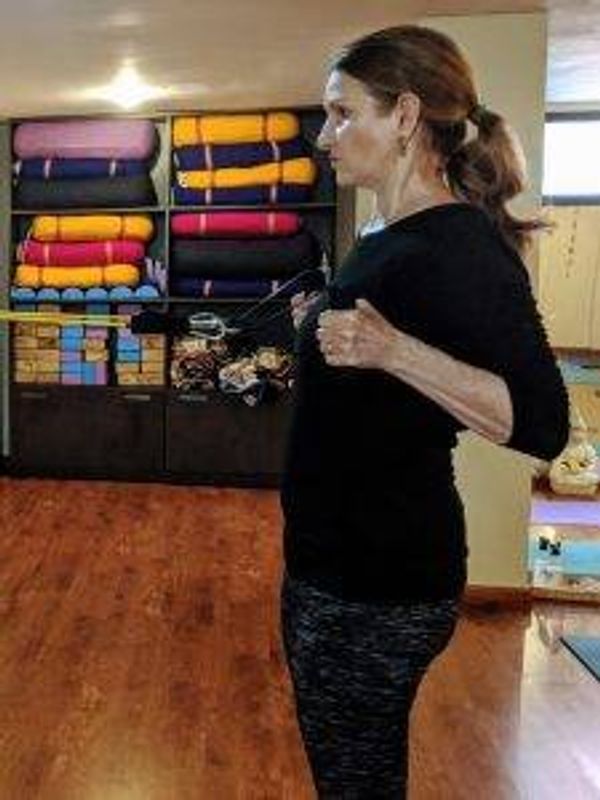
Wood chopper: This is for the abdominal muscles. Position the anchor near the top of the door and hook both ends of the band to one handle. Grip the handle with both hands, extend your arms to create resistance and stand perpendicular to the door with feet shoulder distance apart. Pull the handle down and across your body keeping your arms fully extended. Hesitate, then return to the starting position. Reverse sides when the set is completed.
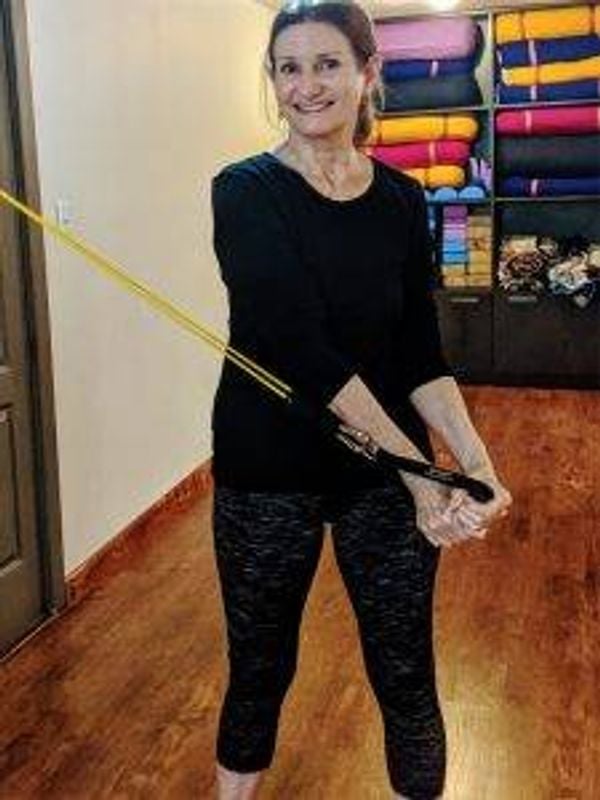
Overhead press: This is for the shoulder muscles. Sit in a chair with the resistance band anchored under your feet and bring handles to shoulder height. Press slowly upward until arms are fully extended, hesitate, then return to starting position.
